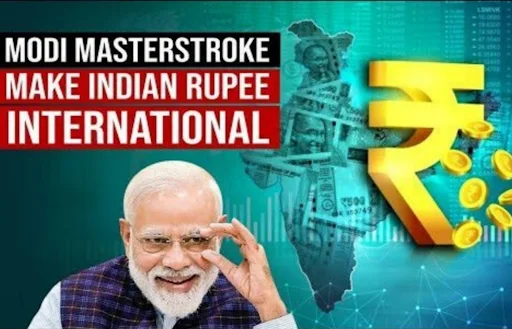How India's Masterstroke Will Make Rupee International
India is one of the fastest-growing economies in the world, with a GDP of $2.9 trillion in 2019. It is also the third-largest consumer market, with a population of 1.3 billion people. However, despite its economic prowess, India’s currency, the rupee, is not widely used in international trade and finance. The rupee accounts for only 1.1% of global foreign exchange reserves and 0.2% of global payments, according to the International Monetary Fund (IMF) and the Society for Worldwide Interbank Financial Telecommunication (SWIFT).
This may change soon, as India has recently taken some bold steps to boost the internationalization of the rupee. These steps include:
Launching a new international financial center in Gujarat, called the Gujarat International Finance Tec-City (GIFT City), which aims to attract global investors and businesses to trade and invest in rupee-denominated products and services.
Signing currency swap agreements with several countries, such as Japan, UAE, and Sri Lanka, which allow them to exchange their local currencies for rupees and vice versa, without involving the US dollar or other major currencies. This reduces transaction costs and exchange rate risks for both parties.
Joining the Shanghai Cooperation Organization (SCO) as a full member in 2017, which is a regional bloc of eight countries, including China, Russia, Pakistan, and Kazakhstan. The SCO promotes economic cooperation and integration among its members and has plans to create a common payment system that could use the rupee as one of the currencies.
Participating in the Regional Comprehensive Economic Partnership (RCEP), which is a mega trade deal that covers 15 countries in Asia-Pacific, including China, Japan, Australia, and ASEAN. The RCEP is expected to create the world’s largest free trade area, covering nearly a third of global GDP and population. The RCEP could also facilitate greater use of local currencies, including the rupee, in trade and investment among its members.
These initiatives are likely to increase the demand for and supply of the rupee in the global market, as well as enhance its credibility and stability. This will benefit India in several ways, such as:
Reducing its dependence on the US dollar and other major currencies, which can be volatile and subject to external shocks and sanctions.
Increasing its bargaining power and influence in regional and global affairs, as well as its role in shaping the international monetary system.
Attracting more foreign direct investment (FDI) and portfolio investment (FPI) into India, as well as encouraging more Indian companies to expand overseas.
Promoting its economic development and integration with other emerging markets and developing countries.
India's masterstroke to make the rupee international is a visionary and strategic move that will enhance its economic potential and geopolitical clout. It will also contribute to a more balanced and multipolar world order, where no single currency dominates or dictates the terms of global trade and finance.








